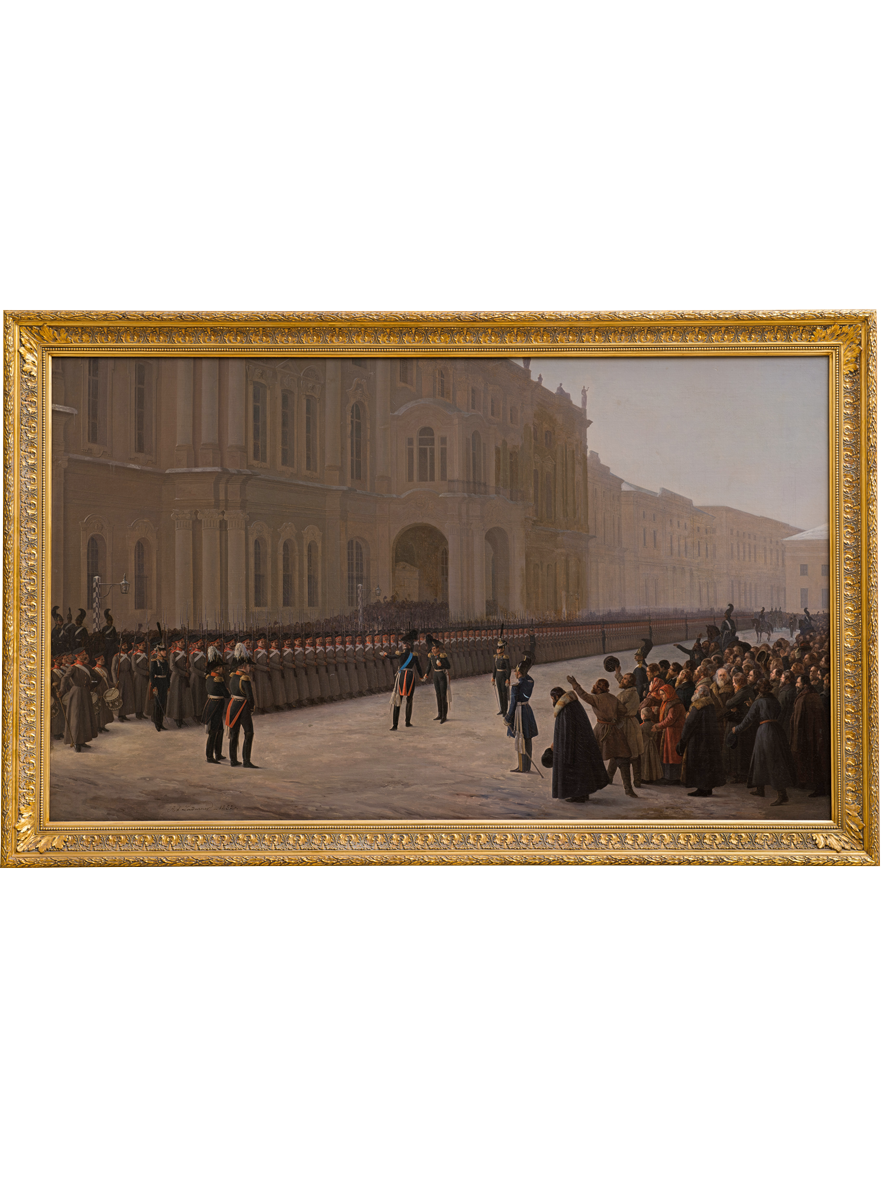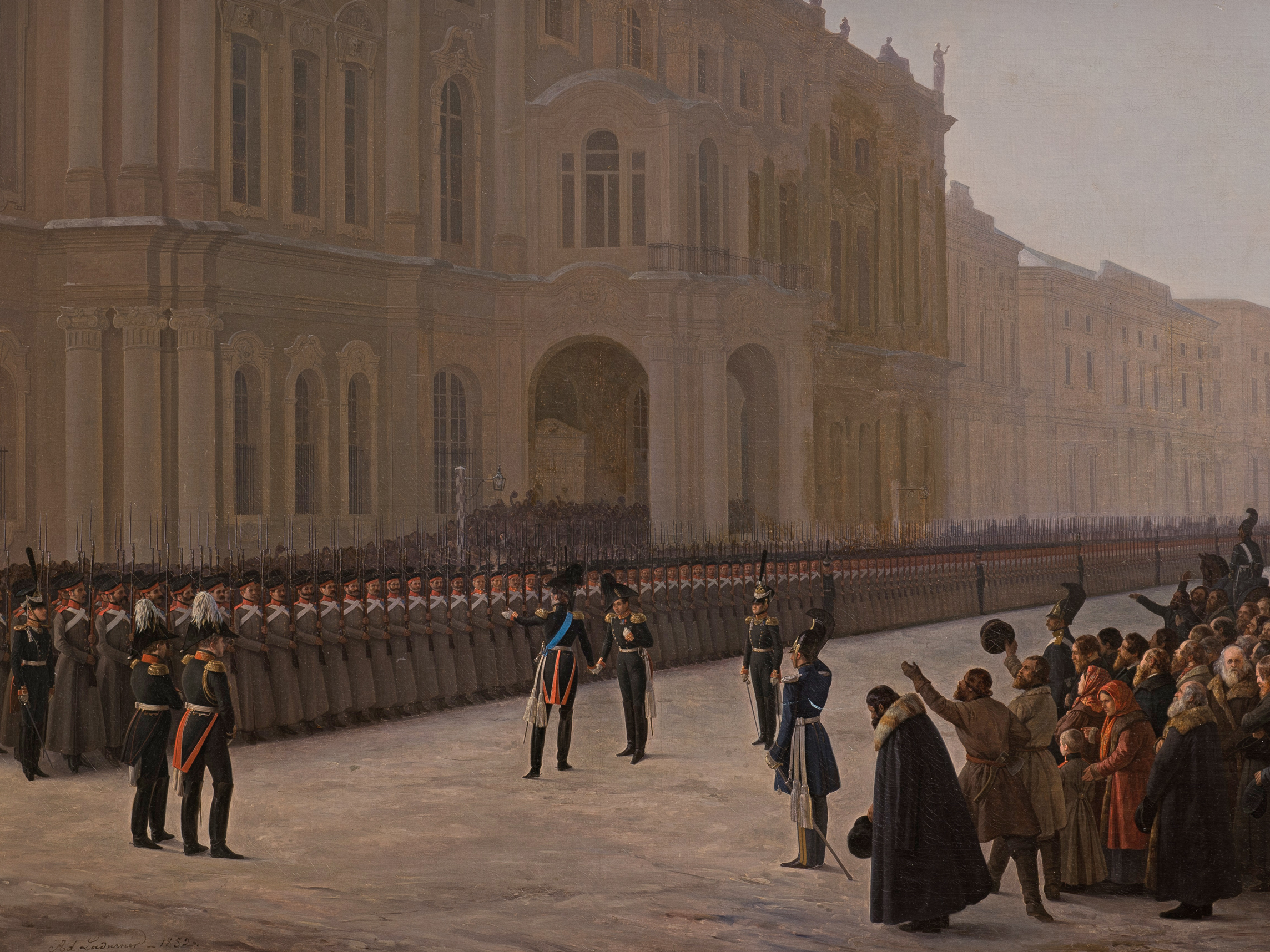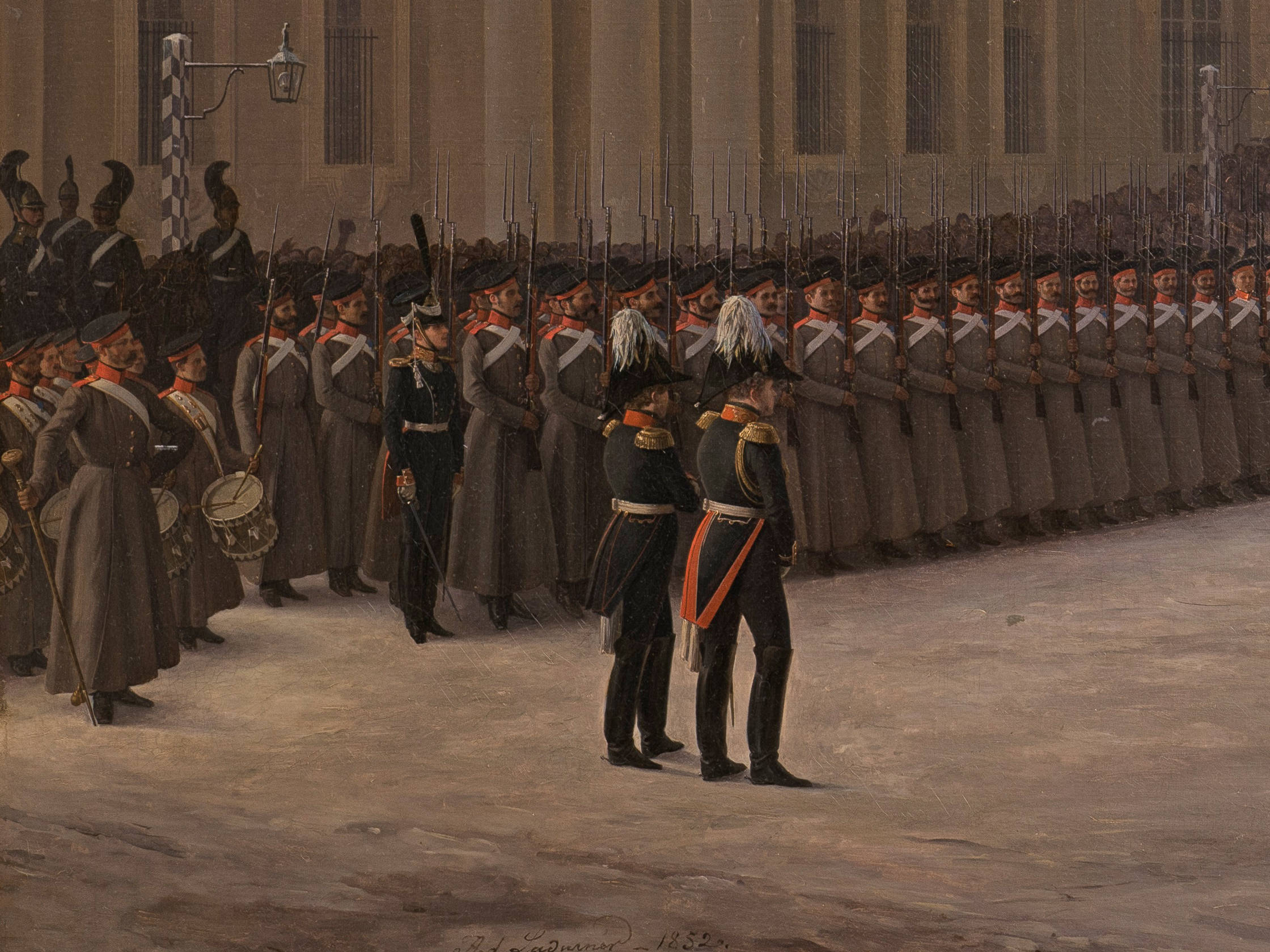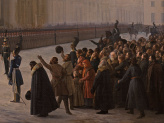Arrival of the 1st battalion of Preobrazhensky Life Guards Regiment to the Winter Palace on December 14, 1825




This painting was presented by Nicholas I to the Life Guards Preobrazhensky Regiment. The Historical Museum received this canvas in 1930 as part of the collection of the Military History Museum. Unfortunately there was almost no information neither about the idea nor creation of this painting or its existence, and it been always exhibited as a view of the parade on Palace Square in the presence of Emperor Nicholas I and Grand Duke Konstantin (Constantine) Pavlovich. However the pencil sketch made by Emperor Nicholas I and the sketch of A.I.Ladurner of 1850 stored in the State Archive of the Russian Federation allowed restoring the significance of that historical event. Probably in a course of work Nicholas I discussed with the artist the painting on which he was working for two years.
The canvas, depicting the dramatic moment of the interregnum, reflected the events of December 14, 1825 and personal perception of these proceedings by the Emperor. The original source of the picture was not only the memories of Nicholas I, but also his later assessments and his personal attitude to the loyalty of the Life Guards Preobrazhensky Regiment that he preserved for life.
The oldest Russian regiment was one of the few Guards units where agitation of Decembrists on the eve of the uprising was not successful. The Regiments’ barracks were located in close proximity to the Winter Palace on Millionnaya Street. In the morning of December 14, the day of the re-oath to the new Emperor Nikolai Pavlovich, "preobrazhentsy" (soldiers and officers of the Preobrazhensky Regiment) were the first who arrived to the Winter Palace after receiving news of the rebellion and rioting troops on the Senate square. This rebellion received in Russian history the name "Decembrists’ uprising".
The canvas, depicting the dramatic moment of the interregnum, reflected the events of December 14, 1825 and personal perception of these proceedings by the Emperor. The original source of the picture was not only the memories of Nicholas I, but also his later assessments and his personal attitude to the loyalty of the Life Guards Preobrazhensky Regiment that he preserved for life.
The oldest Russian regiment was one of the few Guards units where agitation of Decembrists on the eve of the uprising was not successful. The Regiments’ barracks were located in close proximity to the Winter Palace on Millionnaya Street. In the morning of December 14, the day of the re-oath to the new Emperor Nikolai Pavlovich, "preobrazhentsy" (soldiers and officers of the Preobrazhensky Regiment) were the first who arrived to the Winter Palace after receiving news of the rebellion and rioting troops on the Senate square. This rebellion received in Russian history the name "Decembrists’ uprising".
Adolf Ignatievich Ladurner (1798–1856), French war painter and portraitist, who from 1830 worked in Russia, where he became a favorite artist of the Emperor, whose art served to glorify the reign of Nicholas.



